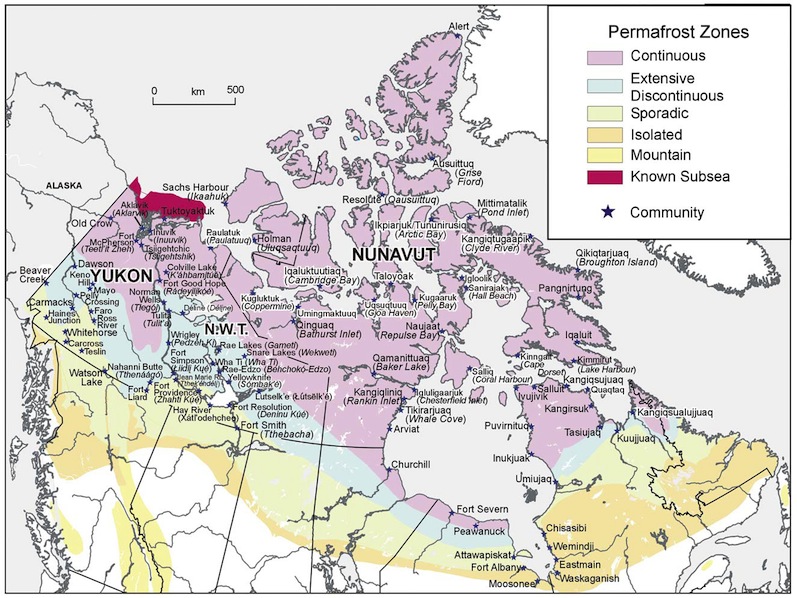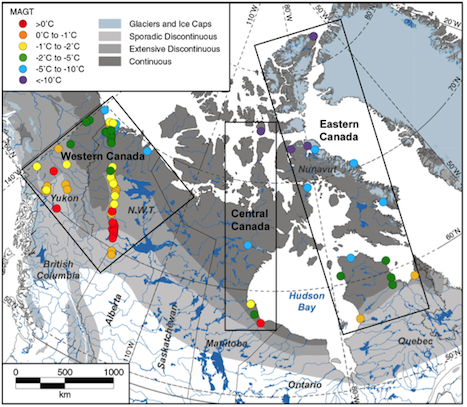
Over half the Canadian land mass is underlain by permafrost (Figure 1), much of it at temperatures a few degrees from the melting point. Predicted increases in mean annual air temperature of several degrees in northern latitudes due to climate change will lead to thawing and destabilization of perennially frozen ground. This permafrost degradation has important implications for landscape processes (terrain, slope and coastal stability), hydrology (surface and ground water regimes), surface characteristics (vegetation, albedo), greenhouse gas sources and sinks (peatlands, soils, gas hydrates), as well as for ecosystems, engineering and infrastructure. An effective monitoring strategy (see Monitoring Section) is essential for the detection of the terrestrial climate change signal and for the assessment of its lag and attenuation, as well as indications of the spatial variability of change across the Arctic. This information is critical not only for the improvement of predictive models and the reliability of impact assessments, but also to further understand the sensitivity of permafrost conditions and processes to climate variability and change (Burgess et al, 1999).
Permafrost State from the International Polar Year (IPY)

Numerous borehole sites across Canada were established during the IPY between 2007-2009. Figure 2 displays the mean annual ground temperature at various sites across the Canadian Arctic. Site-to-site variation is extensive, influences by local factors such as elevation, snow cover, vegetation, water bodies and topography. Additionally, the temperature varies more widely in discontinuous permafrost regions than in continuous. Overall, the IPY results indicate a continued overall permafrost warming trend within Canada (especially in western and high Arctic areas) and permafrost temperature ranges have decreased by 1°C (Smith, Lewkowicz, Burn, Allard, & Throop, 2010).
References
Permafrost Links
Material on this page was provided by Maren Pauly, Department of Geography, University of Waterloo.
